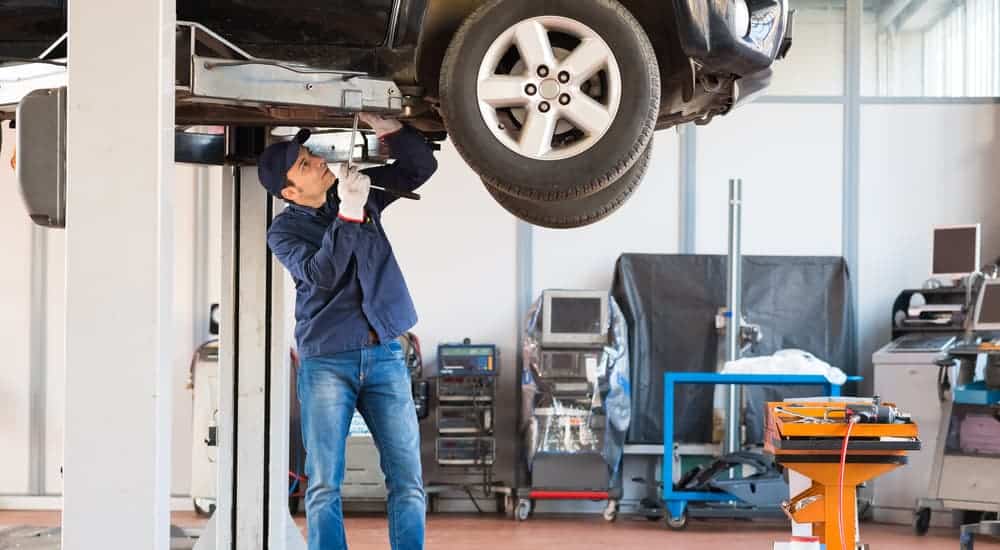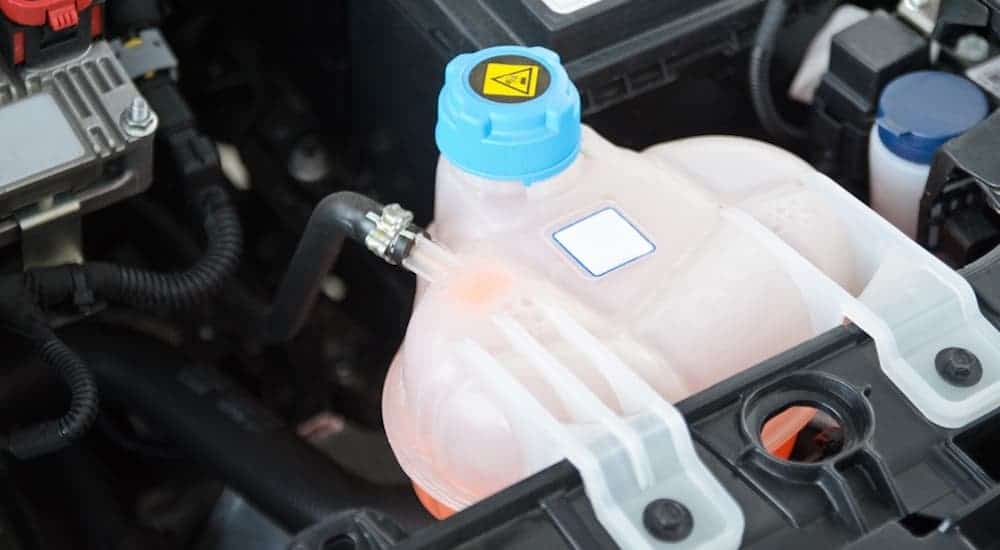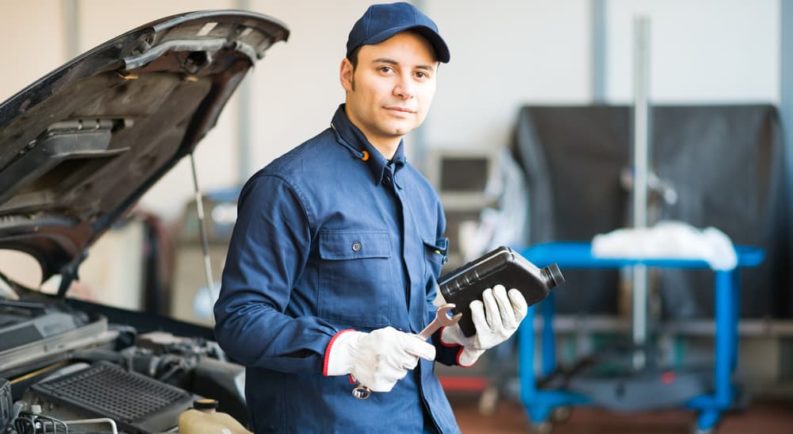Have you taken your vehicle in for a quick lube or other maintenance recently? When it comes to vehicle ownership, there are a lot of things that the average owner needs to keep an eye on and pay attention to. From tires to engines and electronics, there are a number of different moving parts and components that can suddenly fail or wear down, which can lead to some expensive repairs. While it can be very difficult to determine exactly when parts of a vehicle will become worn and require replacement, there are many different steps and precautions that the average owner can use in order to maximize the lifespan of their vehicle’s different components.
One of the best steps that any vehicle owner can take to increase their vehicle’s longevity is to perform regular fluid checks/swaps. Many of your vehicle’s major components such as the engine, transmission, brake system, radiator, etc. require a special sort of fluid to operate successfully. Over time, these fluids can burn-off, or become polluted and ineffective. When this happens, you must either add in some more fluid or drain completely and replace with fresh fluid, which can be quite a hassle for an inexperienced vehicle owner to perform by themselves. While you can take your vehicle down to a local garage for a checkup and a quick lube; that may not always be the best option available.
There are many different unknown factors when it comes to smaller garages, and especially in a large city such as Cincinnati, this can turn simple repairs into quite the headache. Fortunately, most dealerships have their own separate service departments, staffed by professionals who specialize in their particular brands. When it comes to repairing vehicles, familiarity, and experience are some of the best traits to have, and dealerships will always have experienced mechanics who are familiar with your particular vehicle.

What is a Fluid Swap?
Essentially, a fluid swap or more commonly known as a fluid change is a procedure where a component on a vehicle is drained of its fluids and then replaced with brand new fluids. While most people typically think of an oil change when they hear fluid change (as it is the most common of all fluid changes, and generally the most common and frequent form of vehicle maintenance), there are actually a number of different parts in a vehicle which require their own unique form of fluid. There are a number of different reasons that a fluid change may need to be performed, which will vary depending on the type of fluid.
Different Kinds of Fluid Swaps
The first and most important is an oil change, which most if not all vehicle owners should be at least familiar with. The engine is one of the most important components in a vehicle and requires motor oil in order to lubricate, maintain temperature, and to remove any buildup of grease or sludge. Over time, the motor oil becomes polluted and must be replaced, along with the oil filter. Luckily, it is very simple to check the status of your oil.
Simply open up the hood of your vehicle, and locate the “dipstick”. This is a long, usually metallic rod with a brightly colored handle that is placed in the engine, and reaches into the motor oil reservoir. Grab the handle and remove the dipstick, wipe the end of it, and place it back in (this ensures that the oil is being measured while it is level and not in motion). Then, pull it back out and check the bottom. There are two notches on the end of the dipstick which indicates the acceptable range of oil that the engine requires, if it is in between the two notches, then the amount is good. The other thing to look out for is the color of the oil. New oil is semi-translucent and golden in color. If it appears to be cloudy and dark-brown or black, it may be time for an oil change.
Outside of the engine, there are quite a few different components that require fluid, but they do not need to be changed nearly as often. The transmission has its own special kind of fluid, aptly named transmission fluid. This helps keep all of the gears inside of the transmission running smoothly. Unlike motor oil, transmission fluid is part of a closed system, so it should never run low.
The transmission, like the engine, has a dipstick which can be checked in a very similar manner, although the vehicle needs to be on when it is checked. You are not looking for the level of the fluid, but the color and smell. Transmission fluid is red, and it should stay that color. If it is blackish and smells burnt, then it needs to be changed. The radiator helps maintain engine temperature, and it requires a fluid called coolant or antifreeze.
Coolant only needs to be changed once every 2-3 years, but you should check the level a few times throughout the year. This can be done very easily by removing the radiator cap while your engine is off and cool by peering into the radiator. You should NEVER check while the vehicle is running, it can be dangerous for you and your vehicle. There should be a line along the inside wall of the radiator where the coolant goes up to.

The brakes are similar to the transmission, in that brake fluid is a part of a closed-system, and should not run low. However, you should still check it every now and again to see how clean it is. This can be done by simply looking at the side of the brake fluid reservoir, as it is translucent. It should have a goldish tint to it, like motor oil. If it is clouded and dark, it may need to be changed.
Power steering fluid is pretty similar to brake fluid and transmission fluid and should never run low. However, it is still worth checking every now and then. Like brake fluid, simply locate the reservoir and check the level on the side. It is advised to keep it topped-off, but it does not actually need to be changed frequently if at all.
Local Quick Lube vs Dealership
When it comes to any sort of vehicle maintenance, you want to find a place with a knowledgeable mechanic who has experience working on your particular vehicle. Each different make and model is unique in their layouts and hardware, which can make a mechanic’s life difficult. Most mechanics will be able to “figure it out” so to speak, as some vehicles are generally similar, however for some people that is an unnecessary risk, as vehicles can be very unpredictable at times.
Luckily, most reputable dealerships possess a service department with mechanics who specialize in that particular brand of vehicle. Finding a good mechanic can be a very tough process for some people, as a lot of people are not quite sure what to look for. Especially for drivers in a large city such as Cincinnati with a plethora of local options, it can be maddening.
A dealership is one of the most dependable options for just this reason. It cuts out most of the guesswork on the owner’s part. No longer would you have to wonder if your mechanic knows your particular vehicle, as that is what they are trained and work exclusively on. Not only do you get the guarantee of experience, but you also know that the fluids and other parts being used are the best available for your vehicle. When it comes to vehicle repairs such as a fluid swap, a dealership is not only the easiest choice for the average driver but also the smartest one as well.

